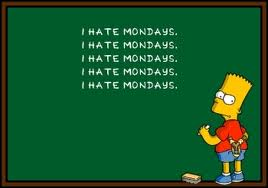We will be featuring blog posts from Conner Galway periodically. Conner is the Founder of Junction, a Digital Communications Company based in Vancouver with whom we partner. Here’s Conner’s views on some recent PR calamities.
Everyone loves a good scandal. It’s why we watch reality TV, click on clickbait, and share the latest brand fails — and it’s also been driving a ton of conversation online this week.
First off, we’ve got the now-infamous Pepsi Ad where Kendall Jenner solves the world’s most divisive problems with a wink and a cool, refreshing beverage.
Not to be outdone, Nivea’s Middle East marketing team tried to drive their brand message home with their new tagline: “White is Purity”.
And finally, United Airlines bridged the online-offline gap by first banning a 10 year old girl for wearing some pretty standard leggings, and then dragging a man kicking and screaming from his seat while the whole thing was caught on Facebook video.
The flurry of incidents has sparked a lot of online debate about an age-old question: Is all publicity good publicity? In other words, everyone’s been talking about Pepsi this week, so shouldn’t that be chalked up as a win?
It’s that type of thinking that drives brands to make some pretty questionable choices with their content, and the cause can be tracked back to how we measure success.
In the pre-social media days, brand success was measured by recall, media hits, and total reach. Today’s metrics are deeper, but typically not much different: Traffic, mentions, and engagement.
Measured purely by those numbers, it could be argued that the exec who approved the Purity that has sparked a public outcry should receive a bonus for his/her keen eye for virality.
Let’s take a step back for a minute, though: Even if the sparks of attention were to drive an uptick in sales, what are we doing as marketers and brands in general? I’ll argue that we’re building awareness, connections, and ultimately relationships that translate into brands that grow in value over time. In the industrial-era-fuelled world of the 60s-90s, where the cycle consisted of: make a product, buy awareness, sell and repeat, bad publicity may have shipped product for a little while, and that was fine.
Today, however, we are fortunate to live in a very different world; one where people expect to get to know their brands on a deeper level, where we can interact with our audiences as if they really are walking, talking humans. In that context, the brands that win over time are the ones that make people proud to tell their friends about what they’re up to, and ones that people come back to because they trust the brand even more than they trust the media that talks about them.
Consider the backlash against Uber, and the rush to Lyft (its biggest competitor in the States). Also consider how Subway suffered after its spokesperson turned out to be less than reputable.
Pepsi, Nivea, and United will not build value over time because of the negative press that they’ve just experienced. In fact, the best that they can hope for is to make a grand gesture that attempts to rebuild some of the trust that they’ve lost among their loyal fans.
Bad publicity can be good in only two situations:
- When the bad publicity is polarizing, and galvanizes support.
- When it is clearly an outlier, and the company rallies to make meaningful change that clearly demonstrates what the company has always stood for.
You can follow Conner on Twitter @Conner_G.










![shutterstock_443845528-[Converted]](https://i0.wp.com/peppertt.com/wp-content/uploads/2022/11/shutterstock_443845528-Converted.jpg?resize=81%2C41&ssl=1)















